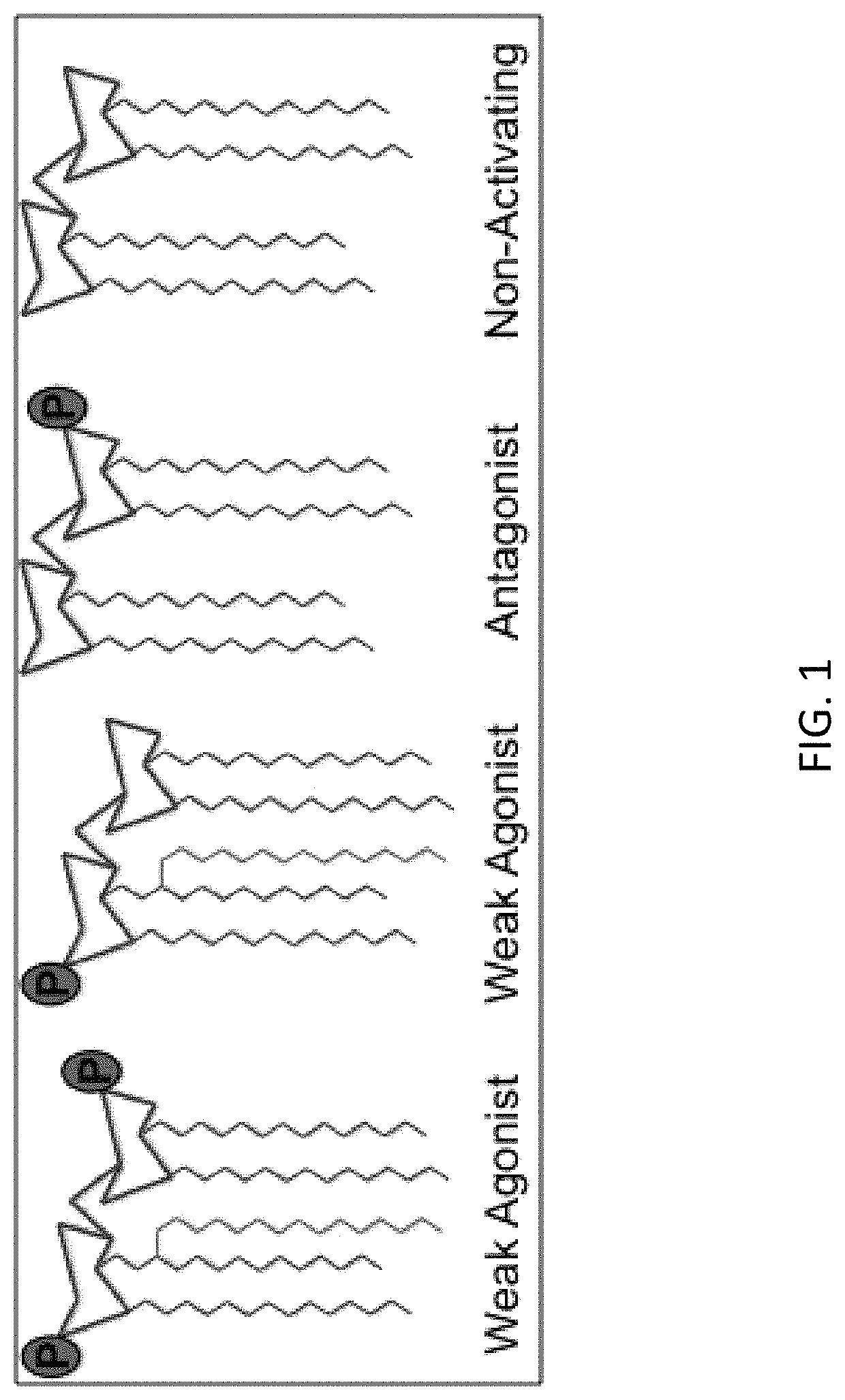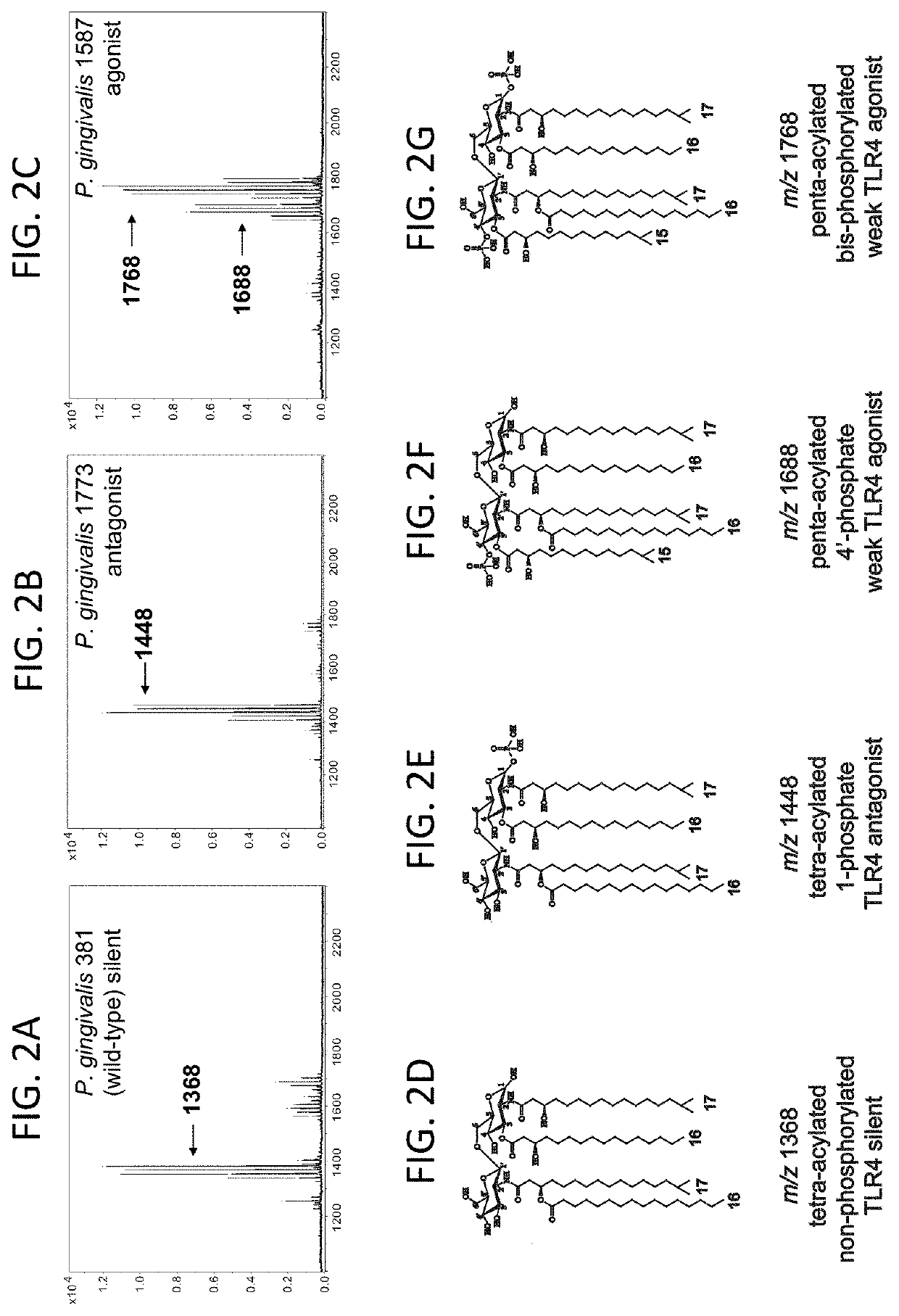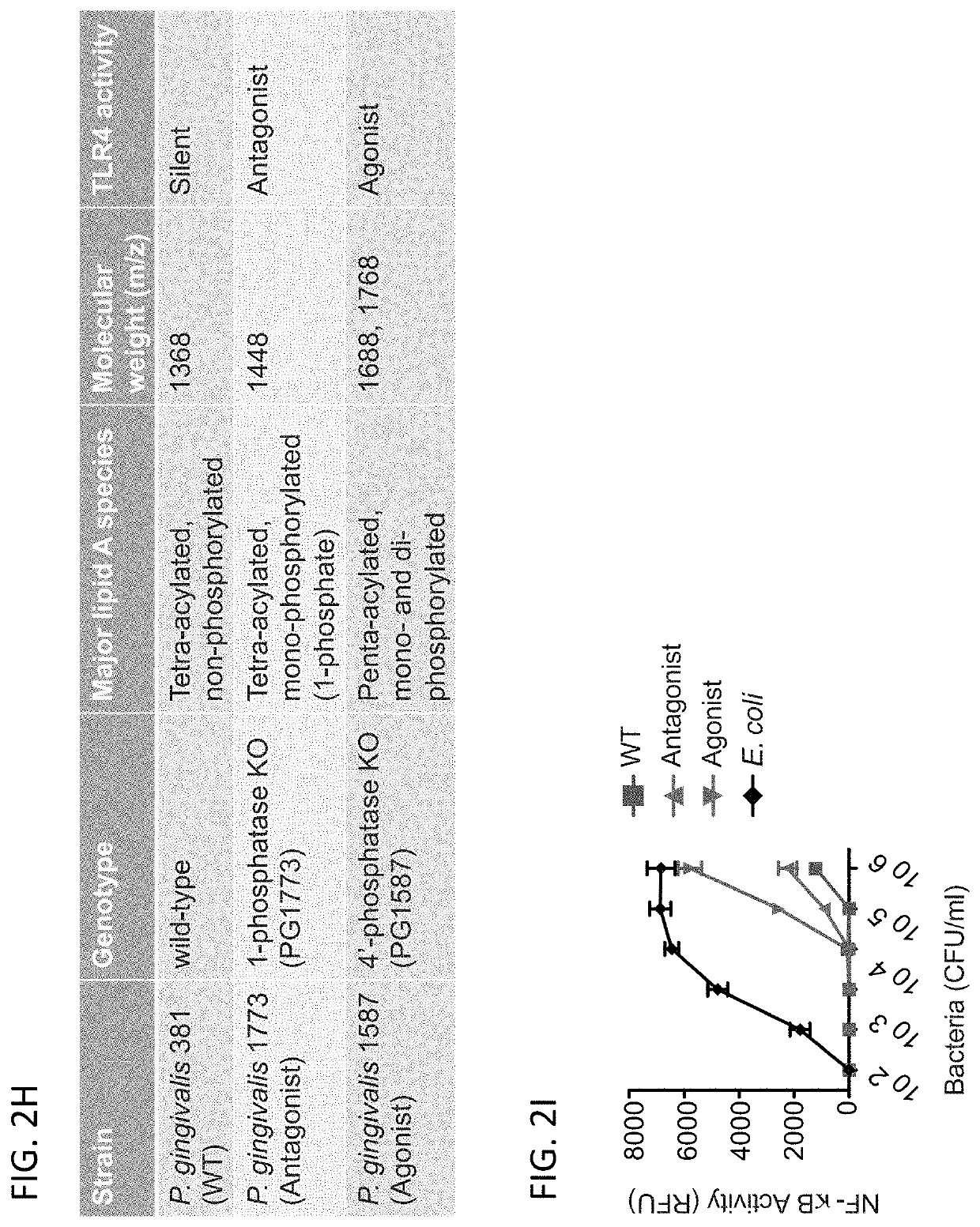Porphyromonas gingivalis immune modulators and uses thereof
a technology of porphyromonas gingivalis and immune modulators, which is applied in the field of porphyromonas gingivalis immune modulators, can solve the problems of limited immunotherapy potential, dysregulation of immune activation, and potentially severe side effects, and achieve the effect of suppressing an immune respons
- Summary
- Abstract
- Description
- Claims
- Application Information
AI Technical Summary
Benefits of technology
Problems solved by technology
Method used
Image
Examples
examples
Background
[0090]Recent advances in the understanding of immune regulation have led to the hope that through appropriate manipulation of the immune system it will be possible to treat disorders ranging from autoimmune diseases that result from dysregulated immune activation [4, 6, 7], to cancer, whose elimination by elicitation of an appropriate immune response seems achievable [2, 3, 5, 8]. A majority of efforts currently underway for the development of immune-modulatory therapies have focused on targeting specific components of the host immune response, including pattern recognition receptors (PRRs) [9]. PRRs, including Toll-like receptors (TLRs), detect conserved microbial products and play a central role in the activation of innate and adaptive immune responses to infection. Several host-adapted bacteria express structurally divergent forms of lipid A as a strategy to evade innate immune detection at TLR4, and recent studies suggest that it may be possible to manipulate these mic...
PUM
| Property | Measurement | Unit |
|---|---|---|
| Mass | aaaaa | aaaaa |
| Immunogenicity | aaaaa | aaaaa |
| Inhibition | aaaaa | aaaaa |
Abstract
Description
Claims
Application Information
 Login to View More
Login to View More - R&D
- Intellectual Property
- Life Sciences
- Materials
- Tech Scout
- Unparalleled Data Quality
- Higher Quality Content
- 60% Fewer Hallucinations
Browse by: Latest US Patents, China's latest patents, Technical Efficacy Thesaurus, Application Domain, Technology Topic, Popular Technical Reports.
© 2025 PatSnap. All rights reserved.Legal|Privacy policy|Modern Slavery Act Transparency Statement|Sitemap|About US| Contact US: help@patsnap.com



